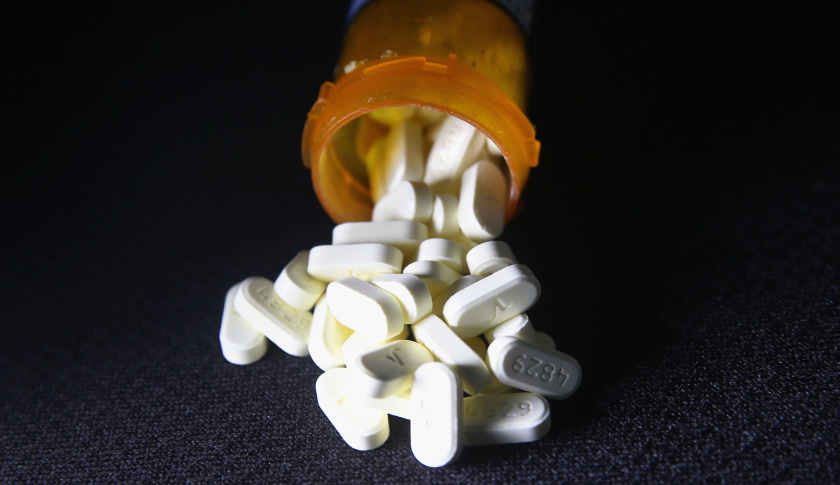OxyContin’s 12-Hour Dosing Claim Attacked in Massive Investigation
HEALTH, 9 May 2016
Purdue Pharma’s marketing of opioid was dangerously misleading, report says.
6 May 2016 – America is in the throes of an opioid epidemic. Since 1999, more than 165,000 people have died from overdosing on prescription painkillers; opioids have even been implicated in the death of superstar Prince. Now, an extensive new investigative report by the Los Angeles Times puts Purdue Pharma, the maker of the opioid OxyContin, under the microscope, questioning whether the drug’s branding helped fuel the scourge ravaging the country.
Purdue has already faced plenty of scrutiny from the government and others over its promotional tactics for OxyContin, as Stat News notes. In fact, three Purdue executives plead guilty to charges of misleading marketing for the drug and were forced to pay more than $600 million in fines. And in December, Purdue settled a lawsuit from the state of Kentucky, which charged that the company misled the public about the addictiveness of the drug.
But the new Los Angeles Times investigation raises alarming questions about the firm’s dosing claims and their connection to the epidemic.
First hitting the market in 1996, OxyContin became a blockbuster drug as Purdue Pharma branded it as a painkiller that required just twice daily treatment. One dose was supposed to relieve pain for 12 hours. Revenues for Purdue, a privately-held company, are about $3 billion per year, most of it due to OxyContin, according to Forbes. Purdue’s sole owners, the Sackler clan, now ranks on Forbes‘ list of richest American families.
According to the Los Angeles Times, Purdue execs knew that the 12-hour claims were questionable. The newspaper pored through thousands of pages of confidential documents detailing communications between Purdue executives, as well as other documents, and found that Purdue had “been confronted with…complaints from doctors, reports from its own sales reps and independent research” showing that the drug didn’t last 12 hours for many patients. Furthermore, patients prescribed OxyContin had reported that its effects wore off after eight or even six hours, according to the Times. And once the effect wore off, some experienced intense withdrawal symptoms.
Rather than recommend smaller but more frequent dosing, Purdue unleashed an army of sales reps to pressure doctors into sticking to the 12-hour schedule, according to the Times, insisting that physicians prescribe higher-dosage (and more expensive) versions of the pill for patients who weren’t feeling its full effects.
That’s led to a dynamic wherein more than half of patients prescribed OxyContin for longer than three months are on regimens of more than 60 milligrams per day—a dosage level far more susceptible to abuse and the possibility of an overdose, the Times says.
The financial incentives behind this marketing strategy are clear. Purdue’s extended-release technology for the active ingredient in OxyContin, oxycodone, represents the firm’s main advantage over competing pain pills that require more frequent dosing.
Purdue is pushing back hard on the narrative. “In an attempt to resurrect a long-discredited theory, the [Times] ignores clinical and regulatory data that directly contradicts their story,” said a company spokesperson in response to Fortune‘s request for comment on the investigative report.
“Over the course of two years, Purdue Pharma has provided the LAT with more than a dozen hours of briefings and discussions regarding the clinical evidence supporting OxyContin’s 12-hour dosing and the regulatory requirement that we promote the product as such. Unfortunately, the paper disregarded this information, instead publishing a story that’s long on anecdotes and short on facts.”
The drugmaker’s statement also added that “the people at Purdue have dedicated themselves to helping address our nation’s opioid epidemic.”
DISCLAIMER: The statements, views and opinions expressed in pieces republished here are solely those of the authors and do not necessarily represent those of TMS. In accordance with title 17 U.S.C. section 107, this material is distributed without profit to those who have expressed a prior interest in receiving the included information for research and educational purposes. TMS has no affiliation whatsoever with the originator of this article nor is TMS endorsed or sponsored by the originator. “GO TO ORIGINAL” links are provided as a convenience to our readers and allow for verification of authenticity. However, as originating pages are often updated by their originating host sites, the versions posted may not match the versions our readers view when clicking the “GO TO ORIGINAL” links. This site contains copyrighted material the use of which has not always been specifically authorized by the copyright owner. We are making such material available in our efforts to advance understanding of environmental, political, human rights, economic, democracy, scientific, and social justice issues, etc. We believe this constitutes a ‘fair use’ of any such copyrighted material as provided for in section 107 of the US Copyright Law. In accordance with Title 17 U.S.C. Section 107, the material on this site is distributed without profit to those who have expressed a prior interest in receiving the included information for research and educational purposes. For more information go to: http://www.law.cornell.edu/uscode/17/107.shtml. If you wish to use copyrighted material from this site for purposes of your own that go beyond ‘fair use’, you must obtain permission from the copyright owner.
